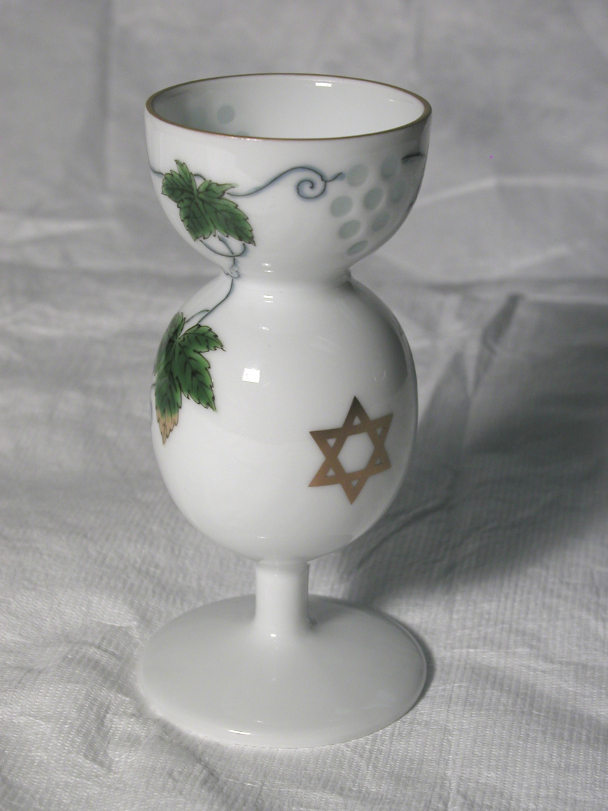The "Ultimate" Passover Cup
Jewish Ritual Artwork
"Jewish practice is multifaceted. We look at the origins of customs, at their meaning, and their spiritual significance in our own times. We are concerned, especially at seder (Passover), with the customs' relevance and interest to children. We also have a tradition of hiddur mitzvah—making Jewish customs aesthetically beautiful. So we have beautifully embroidered tablecloths, ornate candle sticks, and carefully designed cups for wine. These cups embody many of these qualities. They are indeed beautifully formed, in a shape bound to invite children's interest. But why are the Passover cups shaped like "an egg-and-a-half"?
The answer can be found within one more facet of Jewish life—the halakhah, the legal part of our heritage. Legal systems are interested not only in what should be done but also in how, when, and how much! For example, philosophically it is enough to know that society requires us to pay taxes. In practice, both the IRS and each family are interested in precisely how much should be paid by each person. We enter a bar and order a drink—and we know that the precise volume in a single (or double) scotch is carefully regulated.
We drink four cups of wine at Passover, traditionally corresponding to the four promises of redemption made by God to the People of Israel. So we must consider how much (in volume) is defined to be a "cup" of wine. Here, we look at systems of measure used in ancient Israel.
A cup was defined in the Talmud as being a revi'it—a quarter measure, which is itself defined as one-and-one-half k'beytsa units, where a beytsa is an egg. Thus, our cup is formed to look like an egg-and-a-half in order to remind us of ancient units of measure. There are, of course, debates about the precise volume of an egg, but we have followed the more stringent view associated with the definition of k'beytsa, which may allow for a small margin of error in pouring or drinking.
There are Talmudic authorities who take the view that each cup must be completely drained in not more than two swallows—and our shape allows help in gauging progress with each cup."
Congregation Agudas Achim, Austin, Texas, 2004

The Passover cup that I designed and manufactured shaped like an egg-and-a-half, with a volume equivalent of one-and-a-half k'beytsa (egg) units.
For more about the Passover cup, read "My Life on the Mysterious Island of Nanotechnology" by Zvi Yaniv, available on Amazon.